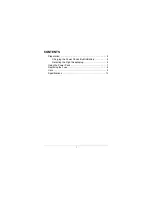
2
SETTING FOR HORSE AND CATTLE CLIPPING
PREPARING THE ANIMAL
The clipper cannot be expected to cut properly if the animal is wet and dirty.
THE ANIMAL MUST BE CLEAN AND DRY.
Ideally, shampoo and rinse the coat a few days before clipping. The building floor should
also be clean and dry.
Clip horses before the coat grows thick and clip frequently to maintain an even length. If
the legs are clipped use standard blades, whereas the body may be clipped with standard
or fine blades.
Cattle require coarse toothed blades.
Stretch the skin flat with the hand and as far as possible cut against the direction the coat
grows. Glide over the skin with the blade.
Stop clipping at intervals to brush off the coat and oil the blades.
TENSIONING THE CLIPPER BLADES (Fig. 1)
1.
Wipe the head and blades (including between the teeth) absolutely clean.
2.
Fit the blades on the clipper head and screw the tension nut down tight.
3.
Turn the tension nut back 1½ turns. This is the correct setting. The tension nut
marker line (A) will ensure accuracy.
4.
Oil the blades and head, switch the clipper on and run briefly.
5.
Switch off and wipe off any excess oil.
LUBRICATION (Fig. 1)
Oil the moving parts before starting the motor. It is necessary to point the head up to
allow oil to penetrate between cutter points, and sideways for effective lubrication of the
blade rear surfaces.
1.
Oil between cutter points
2.
Oil clipper head front pads
3.
Oil cutter blade guide channel
4.
Oil cutter blade heel
5.
Oil crank shaft and roller
Unlike other clippers, this model does not slow down appreciably when lubrication is re-
quired. Therefore, regular oiling of the blades is essential to keep them cool. If the blades
get hot you are not oiling often enough or in the right places.
OIL EVERY 10 MINUTES RUNNING – Wipe off excess oil.
WARNING:- The use of spray lubricants is not recommended. Use Lister R15 oil, which is
specially formulated for clipping.






























